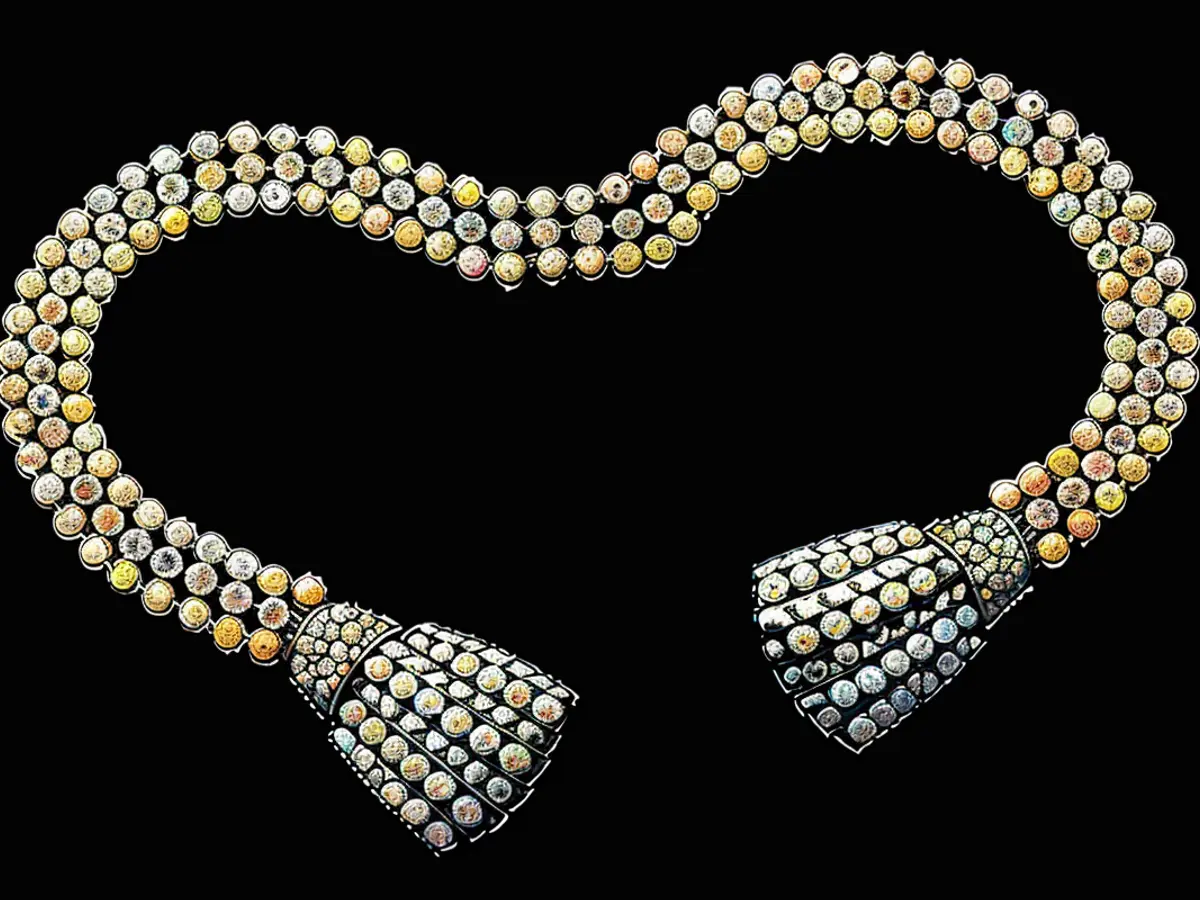Extraordinary diamondeCollar, donned at two regal British coronations, hits the auction block.
Approximately 300 carats in weight, this 18th-century artifact, believed to have been crafted about a decade prior to the French Revolution, is making its first public appearance in half a century and will be entering the auction market on November 11, as announced by Sotheby's, who is overseeing the sale.
The jewel is currently on display at Sotheby's in London until Wednesday, after which it will embark on a worldwide tour of exhibitions. Following its stop in Geneva, Switzerland, it will take center stage at Sotheby's Royal and Noble auction, as stated in a press release issued on Monday.
Although the necklace's origins remain undocumented, Sotheby's posits that the ancient piece could only have been manufactured for royalty or a prominent aristocrat.
During the early 20th century, the necklace belonged to the Marquesses of Anglesey, a renowned aristocratic family in the UK with close ties to the British royal family, according to Sotheby's.
Marjorie Paget, marchioness of Anglesey, donned the necklace for King George VI's coronation in 1937. Her daughter-in-law subsequently wore the same jewel for Queen Elizabeth II's coronation in 1953, as per the release.
The family parted ways with the diamond piece in the 1960s and it was subsequently displayed at the American Museum of Natural History before being acquired by a private collector.
"This exceptional and vital diamond ornament is a miraculous survivor of the extravagant court life of the Georgian era, characterized by its unmatched opulence and grandeur; arguably, it is one of the most splendid and intact Georgian jewels in private possession," stated Andres White Correal, chairman of Sotheby's jewellery Europe and Middle East and head of noble jewels, in the release.
"Compared to other surviving Imperial and Royal jewels from the same period, this necklace outshines these examples; it is an abundance of diamonds and also a masterclass in exceptional design, craftsmanship, and technical innovation for the period," he added.
The necklace consists of three rows of diamonds that extend into a diamond tassel on either side.
Each diamond, as per Sotheby's, is of an ancient mine brilliant cut and weighs between one and one-and-a-half carats. The diamonds, likely sourced from India's legendary Golconda mines, where the Hope Diamond was discovered, are said to have been used.

Jewels from that era were renowned for their luxury and adaptability, with one item often serving as both a necklace and a decorative embellishment sewn into clothing, as mentioned in the release.
This specific piece can be worn as a necklace with the tassels hanging on either side, or tied in a simple knot.
A dazzling scandal
It is speculated that some of the diamonds from the necklace may have originated from the diamond piece at the heart of the "Affair of the Diamond Necklace" scandal.
The 1785 scandal at the French court of Louis XVI involved a cardinal attempting to regain favor with Marie-Antoinette, the last Queen of France, who was duped into acquiring a necklace on behalf of someone masquerading as the Queen.
However, the deception was exposed when the jewellers, who had not received payment for the necklace, directly appealed to the Queen for payment, who had not received the necklace herself.
Meanwhile, the jewel had been broken up and sold in London, in the hands of the trickster.
The scandal led to a tarnishing of Marie-Antoinette's reputation, who was falsely accused of having an immoral relationship with a cardinal, and discredited the French monarchy ahead of the French Revolution, in which the Queen met her demise.
This luxurious and historically significant necklace, with its timeless style and grandeur, is expected to fetch a high price at the Sotheby's auction on November 11. The necklace, known for its flexibility and adaptability, can be worn as a traditional necklace or tied into clothing, showcasing the elegance and versatility of jewelry from the Georgian era.









